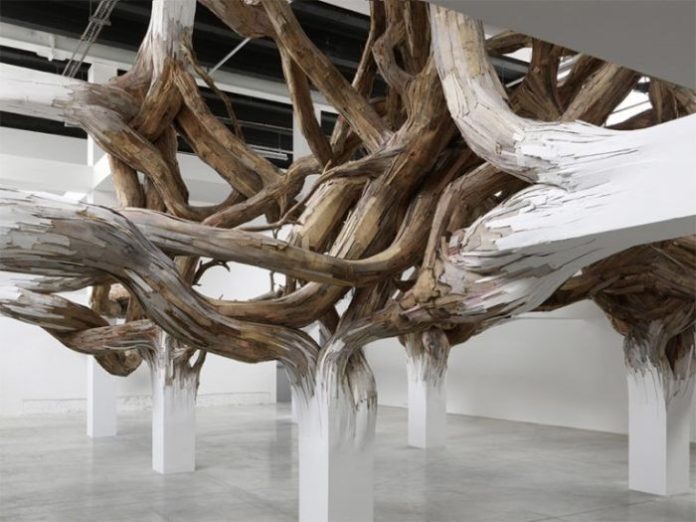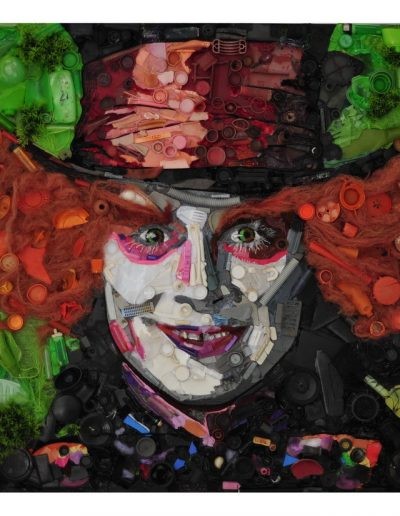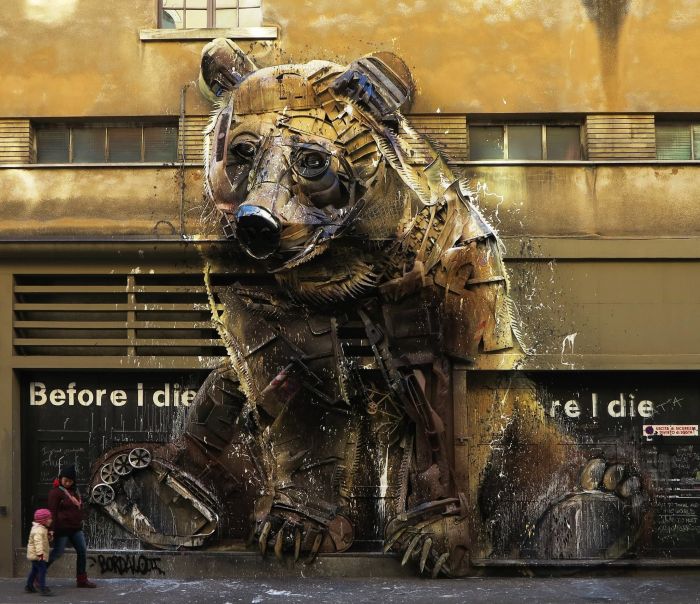
Art has always been a reflection of reality. The artists express their everyday life with their works, accentuating their particular conditions. The socio-cultural changes (and also climate, now) are reflected in the art that depicts the salient and most representative aspects. The environmental pollution and the climatic crisis arouse the attention of the artists, known and not, of our century and the development of the “Trash Art” (garbage + art) is evidence of this. Trash Art is considered an evolution of an art form called “Fragment Art” founded in 1918 by Kurt Schwitters: collages and assemblages of bus tickets, pieces of wood, fabrics, various labels and wastes replace the normal paints in the works of the German artist.
Nowadays many artists have been inspired by the “greats” of the past in recovering waste products to give them the opportunity to be, also, revalued and appreciated. The noble trend aims to carry out an “artistic struggle” against environmental degradation and especially against the accumulation of waste, sometimes difficult to dispose of. The materials – addressed to the landfill – such as plastic, wood, paper and various waste are revitalized in innovative and green works of art, that is close to nature through recycling. ISPRA (Istituto Superiore per la Protezione e la Ricerca Ambientale) data on the Urban Waste Report for the year 2020 show a decrease of 3.6% compared to 2019: urban waste produced in Italy in 2020 amounted to 28,9 million tons compared to 30 million tons in 2019. On average, every citizen produces 488 kilograms of waste per year in Italy. These seemingly encouraging figures are influenced by the limited socio-economic activities that have taken place over the last two years and are therefore determined by the restrictions imposed by the pandemic.
Let’s discover together how art meets the environment thanks to the creations of artists who, using urban waste, combine business with pleasure: expressing their emotions taking care of the environment.
Henrique Oliveira creates large installations, paintings and sculptures from woody scraps of all kinds: fences, decaying wood, processing waste, wooden furniture abandoned near the bins. Attracted by the fascinating and typical wood veins (similar to those of man), the Brazilian artist is known for the creation of “plant installations” that he considers as the impetuous effort of nature to escape urban constraints, to which it is subjected and for which it is often destined to perish.
Annarita Serra has managed to reconcile the need to express her art (through paintings and sculptures) with the need to protect the marine environment from pollution caused by the deposit of plastic waste: “I had two dreams in my life: working with art and saving the sea. I’ve discovered over the years, that one of them helps me realize the other, that art helps me save the sea. I know that I am doing this because today, after twenty years, I am no longer alone“, says the Italian artist of Sardinian origins.

Arturo Bordalo, aka “Bordalo II”, uses old pieces of cars, bicycles, small appliances no longer working and, in general, all the waste that can be found on the street, to witness the idea of art as a symbol of a consumer world to which he, With his Street art, he wants to launch a message: focus on sustainability, ecology and biodiversity conservation strongly threatened by the environmental crisis of which man – prone to consumerism and the intensive exploitation of the resources offered by nature – is certainly responsible, recreating nature by means of those materials that, paradoxically, compromise its balance. In degraded areas, Bordalo II reproduces large animals, colored and three-dimensional, known as “Trash animals” and the work “The Bear“, in Turin, is an example of this.

The listed and briefly described works contain a meaning far from trash. Contemporary art, devoid of rules, tries to smooth out the negative effects of the excessive exploitation of materials through the recovery of the same. It is difficult to make beautiful what pollutes and that is no longer needed, but man with his ingenuity and his creativity is also capable of this.
All great art comes from a sense of indignation.
(Glenn Close)






































